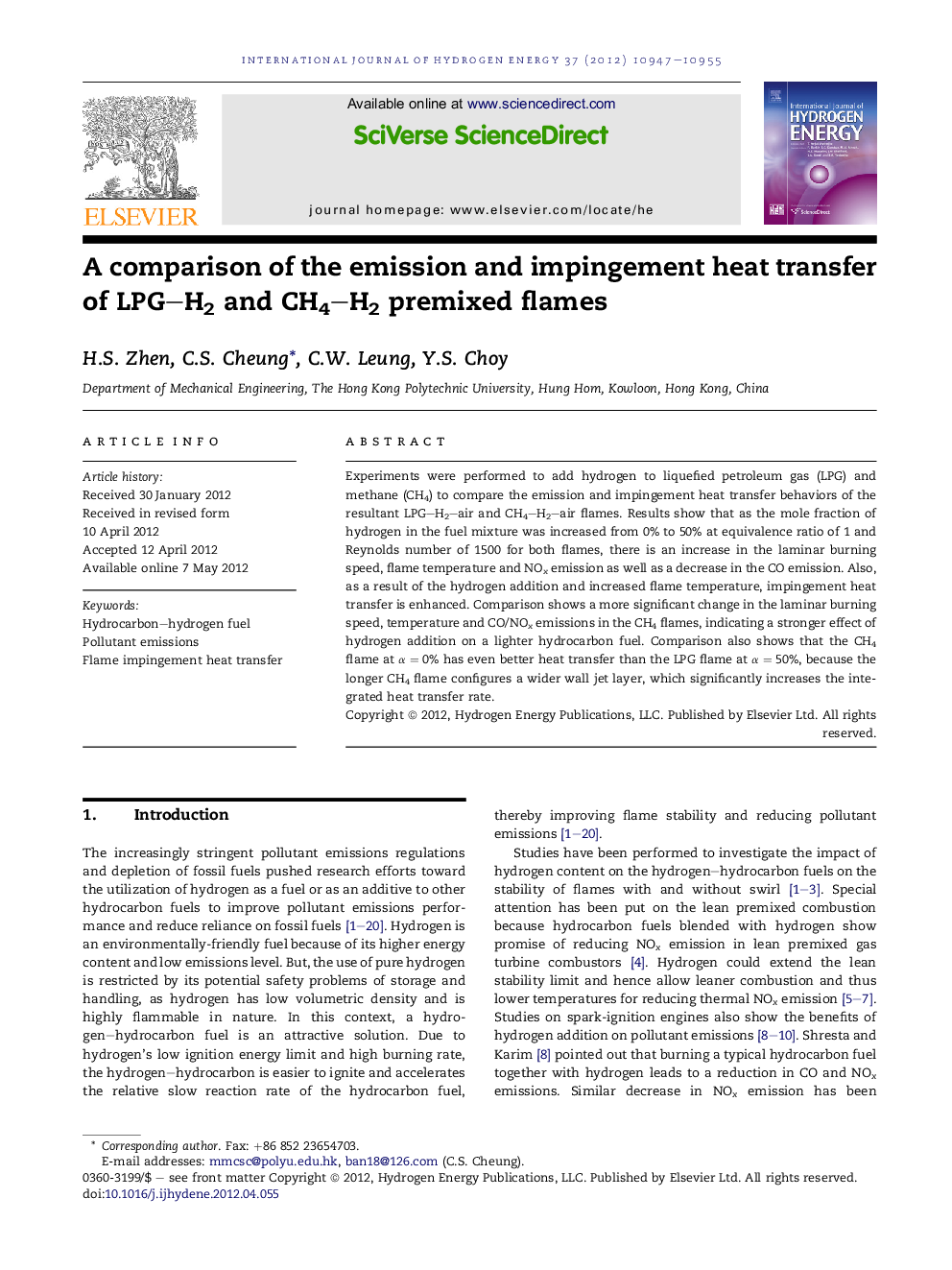| Article ID | Journal | Published Year | Pages | File Type |
|---|---|---|---|---|
| 1276377 | International Journal of Hydrogen Energy | 2012 | 9 Pages |
Experiments were performed to add hydrogen to liquefied petroleum gas (LPG) and methane (CH4) to compare the emission and impingement heat transfer behaviors of the resultant LPG–H2–air and CH4–H2–air flames. Results show that as the mole fraction of hydrogen in the fuel mixture was increased from 0% to 50% at equivalence ratio of 1 and Reynolds number of 1500 for both flames, there is an increase in the laminar burning speed, flame temperature and NOx emission as well as a decrease in the CO emission. Also, as a result of the hydrogen addition and increased flame temperature, impingement heat transfer is enhanced. Comparison shows a more significant change in the laminar burning speed, temperature and CO/NOx emissions in the CH4 flames, indicating a stronger effect of hydrogen addition on a lighter hydrocarbon fuel. Comparison also shows that the CH4 flame at α = 0% has even better heat transfer than the LPG flame at α = 50%, because the longer CH4 flame configures a wider wall jet layer, which significantly increases the integrated heat transfer rate.
► Hydrogen addition to both LPG–air and CH4–air flames. ► Laminar burning speed, temperature and EINOx increase upon hydrogen addition. ► EICO decreases and heat transfer increases upon hydrogen addition. ► Effect of hydrogen addition is more significant for a lighter hydrocarbon fuel.
